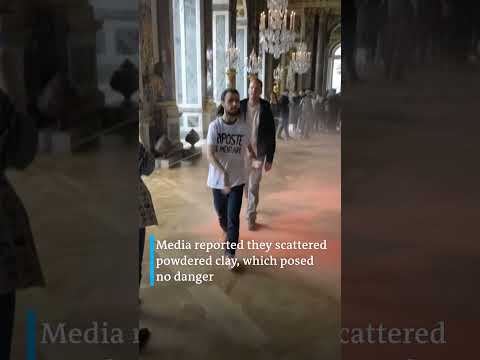(8 Sep 2025)
RESTRICTION SUMMARY:
ASSOCIATED PRESS
Medellín, Colombia – 28 August 2025
1. Various of Special Jurisdiction for Peace workers sifting through soil searching for bones
2. SOUNDBITE (Spanish) Gustavo Salazar, Magistrate, Special Jurisdiction for Peace:
++PARTIALLY OVERLAID BY SHOTS 1 & 3++
"They took people, stripped of their freedom by these groups to the highlands to be interrogated, tortured, mistreated or simply killed and buried, under the belief that their bodies would never be found."
3. Relatives of disappeared at dig site
4. Workers sifting through soil
5. (SOUNDBITE) Margarita Restrepo, mother of disappeared:
++PARTIALLY OVERLAID BY SHOTS 4, 6-8++
"It’s something significant that can’t be put into words. It’s a mixture of feelings of joy and sadness because they’re not yours and sadness because of the fear. Because you always hold on to a little bit of hope that you will find them alive, right? But it is also a joy to know that after so many years without knowing where they are or what happened to them, to find them, even if it is in lifeless bodies, is a joy, it is like a relief."
6. Various aerials of dig site ++MUTE++
7. Wide of memorial wall of disappeared
8. Mid of woman leaving flowers on memorial
STORYLINE:
Relatives of Colombia’s disappeared watched on at an excavation site in Medellin as workers sifted through soil searching for bones in August.
The excavation site known as La Escombrera, which has been confirmed as a mass grave, likely used by right-wing paramilitaries to dispose of their victims in conflict that lasted from 1986 until 2016, sits on a steep hillside in the Comuna 13 district of Medellin, a once strategic location for moving drugs and weapons.
For months, workers from the Special Jurisdiction for Peace have sifted through soil by hand and used diggers to search for bodies and bone fragments as relatives of the disappeared watch.
At the end of the 1990s and into the early 2000s, La Escombrera was fought over by guerrillas and paramilitaries — groups that emerged to combat the leftist insurgents— with the latter eventually gaining control in the early 2000s.
Between 2001 and 2004, Colombian security forces carried out 34 military operations in Comuna 13 in an attempt to take control. Some of these operations have come under scrutiny due to alleged human rights violations against the civilian population.
“People detained by these groups were taken there to be interrogated, tortured, or simply killed and buried, under the belief that their bodies would never be found,” said Gustavo Salazar, a magistrate for the Special Jurisdiction for Peace.
Former paramilitaries, who have taken part in the peace process since 2003, have admitted to killing and burying people in La Escombrera. They were later convicted.
Salazar said the tribunal is investigating the alleged involvement of security force members with paramilitary groups, but no charges have been filed to date in the Escombrera case.
Luz Elena Galeano, 61, has been searching for her husband since he vanished in 2008.
“You could still see the ropes they were tied with and how they were all in a fetal position,” said Galeano.
Margarita Restrepo, 62, lives in fear that her 17-year-old daughter, Carol, is also buried in La Escombrera.
"You always hold on to a little hope that you will find them alive, right, but it is also a joy to know that after so many years without knowing where they are or what happened to them, to find them, even if it is in lifeless bodies is a joy, it is like a relief," she said.
AP Video shot by Marko Alvarez
Find out more about AP Archive: http://www.aparchive.com/HowWeWork
Twitter: https://twitter.com/AP_Archive
Facebook: https://www.facebook.com/APArchives
Instagram: https://www.instagram.com/APNews/
You can license this story through AP Archive: http://www.aparchive.com/metadata/youtube/331050aaac07480c95e2ba43bbcea3cc
Author: AP Archive
Go to Source
News post in September 14, 2025, 12:05 am.
Visit Our Sponsor’s:
News Post In – News





